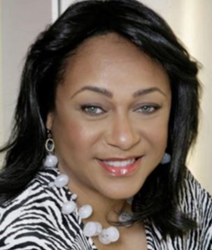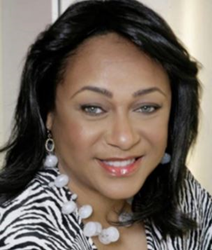
Dr. Fran Cook-Bolden
With keloids the scar bubbles up and over the confines of the wound, expanding to form pink, red or purple extrusions of shiny tissue, sometimes hard and rubbery, sometimes soft and doughy.
BRIARCLIFF MANOR, N.Y. (PRWEB)
March 13, 2020
The patient had been battling the scar since his twenties: there were cycles of surgery, steroid injections, chemotherapy, lasers and pressure clips. Now, at forty-three, he was desperate: the bubble of shiny red skin below his ear was bigger than ever – and still growing, seemingly impervious to repeated treatments. “Keloid scars can be devastatingly persistent,” notes Dr. Fran Cook-Bolden, dermatologist with Advanced Dermatology PC. “It’s vital to work with a specialist who is aware of the latest research and treatment options.”
With normal scarring, the skin’s repair processes come to an end once the new surface is complete. With keloids, however, the off switch is missing: scar tissue bubbles up and over the confines of the wound, expanding to form pink, red or purple extrusions of shiny tissue, sometimes hard and rubbery, sometimes soft and doughy.
Dr. Cook-Bolden, notes that these abnormal scars are unpredictable: “A keloid may be smaller than an inch or grow as big as a football. They may begin immediately after skin trauma – or not until months later. Once started, they can continue to grow for years.”
Research continues on the reasons and mechanisms behind keloid scars, which affect about ten percent of the population. Genetics plays a role. Those with darker skin, including African Americans, Hispanics and Asians are more susceptible to the condition, which runs in families; more than fifty percent who experience keloids have a family member who is also affected. And, in particular, keloids develop during one’s teens and twenties, leading researchers to suspect that hormones also play a role.
“The particular challenge with keloids,” explains Dr. Cook-Bolden, “is that, in some cases, treatments to reduce the scar are only temporary – and may have the opposite effect, involving skin trauma that provokes additional scarring.”
“Fortunately, however,” he continues, “we are seeing new techniques that offer the possibility of ending the keloid regrowth cycle.”
For the forty-three year old patient who had contended with fifteen years of treatment failures, relief finally came when his doctors employed a new form of cryotherapy – using a specialized needle to pierce and freeze the aggressive scar from within, killing the problem cells and altering the tissue composition to inhibit regrowth.
“Intralesional cryotherapy,” observes Dr. Cook-Bolden, “is a good example of a recent newcomer that adds to our arsenal against keloid scars.”
To help patients understand more recent treatments and other considerations, Dr. Cook-Bolden makes the following suggestions:
5 Tips to Say Goodbye to Keloid Scars
1. Act fast: “Don’t ‘wait and see’,” emphasizes Dr. Cook-Bolden. “Younger, smaller scars are more treatable with a wider range of modalities.”
2. Double up: “In many cases,” explains Dr. Cook-Bolden, “a single approach – monotherapy – is not enough to prevent regrowth. For example, the often-employed steroid injections are more effective when paired with cryotherapy.”
3. “Frozen II” – The sequel is improved: “The traditional approach,” Dr. Cook-Bolden observes, “has been contact cryotherapy: freezing the outside of the scar. But, especially for larger scars, this didn’t penetrate to interior cells. We use the CryoShape needle to freeze the entire scar from the inside – and protect the healthy epidermis.”
4. Listen up! There’s a radiation news flash: “As with cryotherapy,” notes Dr. Cook-Bolden, “we also have newer approaches with superficial radiation therapy. The SRT-100 targets the overgrowth scar cells while protecting deeper cells. It’s especially effective when used within twenty-four hours of surgical scar removal – which does not prevent reoccurrence when used on its own.”
5. Take action to prevent keloids: “The American Academy of Dermatology’s web site provides steps on dressing wounds to avoid keloids,” says Dr Cook-Bolden. “Those at risk may want to consider life-style choices, such as piercings or tattoos. Piercings should be carefully monitored for skin thickening – with immediate action taken. If you’re thinking about a tattoo, do a sample skin check first.”
“The advances we’re seeing in treating keloids,” concludes Dr. Cook-Bolden, “offer patients relief without having to go through years of frustration.”
Fran Cook-Bolden, M.D., F.A.A.D., is board-certified in dermatology.
Advanced Dermatology P.C. and the Center for Laser and Cosmetic Surgery (New York & New Jersey) is one of the leading dermatology centers in the nation, offering highly experienced physicians in the fields of cosmetic and laser dermatology as well as plastic surgery and state-of-the-art medical technologies. http://www.advanceddermatologypc.com.
Share article on social media or email:

